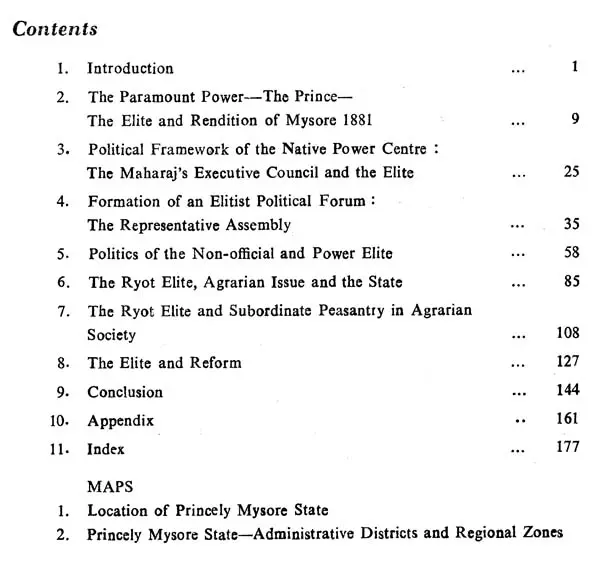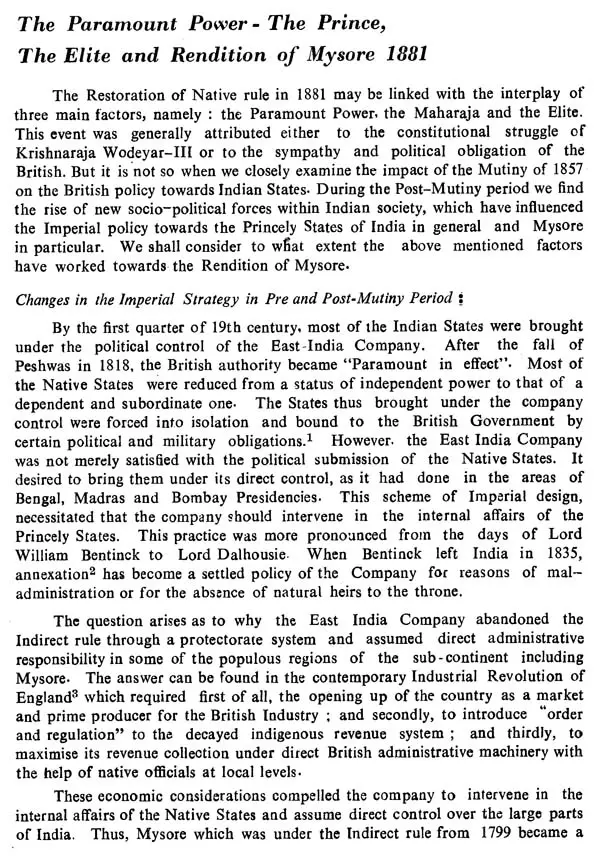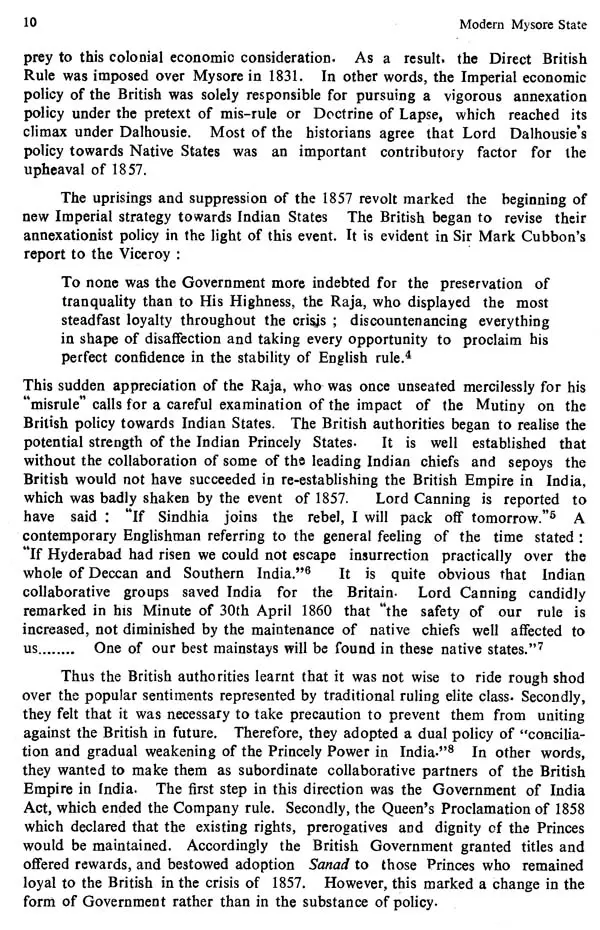
Modern Mysore State-1881-1902 (A Study of the Elite, Polity and Society)
Book Specification
| Item Code: | UAK006 |
| Author: | Made Gowda |
| Publisher: | University of Mysore, Mysore |
| Language: | English |
| Edition: | 1997 |
| Pages: | 179 |
| Cover: | PAPERBACK |
| Other Details | 9.50 X 7.50 inch |
| Weight | 300 gm |
Book Description
Dr. Made Gowda, was born on July 8th 1944 in Doddahally, Holenarsipur Tq. Hassan District, of Karnataka. He obtained his B.A. and M.A. Degree in History from Mysore University in 1968 and 1970 respectively. He joined Maharaja's College, Mysore as Lecturer in History in 1970 and subsequently he was appointed in the Institute of Correspondence Course where he taught for both B.A. and M.A. Class till 1991, he was awarded Teacher fellowship under U.G.C. Programme and obtained his Ph.D. Degree in History from the Mysore University in 1985. He has published about 14 research papers in the Historical Journals and attended state level and National level seminars organised by the South Indian History Congress. Indian History Congress and Karnataka History Congress. He has contributed about 10 articles in Kannada for Kannada Encylopedia. Since 1991 he is working as Reader in Department of Studies in History, Manasagangotri, Mysore. His special area of Study is on Social History of Modern India.
Princely Mysore occupies a physically well-defined position in South India (see Map-1). It has been termed as a rocky triangle It is a table-land, situated in the angle where the eastern and western ghats ranges converge into the group of the Nilgiri Hills. It is enclosed by chains of mountains from the West, South and East, on whose shoulders the plateau rests. As a result of the Partition Treaty of 1799, the State was surrounded by the British India territories of Bombay and Madras Presidencies on all sides on the north by Dharwar. Bellary and Ananthapur: on the east and south by Cuddapah, North Arcot, Salem. Coimbatore, Nilgiri and Malbar: and on the west by north and south Canara, and Coorg (see Map-2). It covered an area Its physical features can broadly be divided into two zonal regions: the Malnad (hilly region) and the Maidan (plain region) (see Map-2). The Malnad is a land of magnificent hills and forests, bordering on the Western Ghats. It is noted for its perennial streams and kans (or evergreen forest) which gave rise to plantation economy, particularly of areca and coffee under the Colonial Rule in the 19th century. Another notable feature of this region was that it had sparse population. During the pre-British period such an isolated condition was not conducive to the immigrants from the plains. But with the establishment of the British Rule and introduction of capitalist economy, the isolation came to an end, and gave rise to plantation economy which attracted labourers from the plains. The Maidan (or Bailshime) or plains formed a far greater portion of the State than the Malnad. It is comparatively a low and undulating region lying between the Malnad and the Madras Presidency. This region has historically been in continuation of interior Tamil uplands connected with Tamil plaint. This area formed an agrarian heart-land of the Princely Mysore. Irrigation, supported by canals (Anekatte) drawn from the rivers and serial tank system, was the main base of the agrarian economy of this part of the State. Sugarcane, rice and ragi, with gardens of coconut and areca palm are the main ecotypes of the region.
**Contents and Sample Pages**











